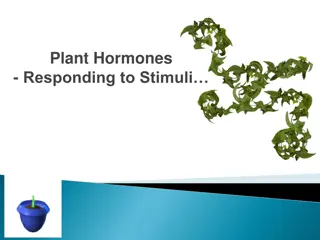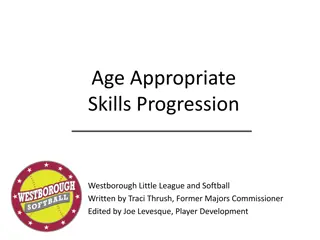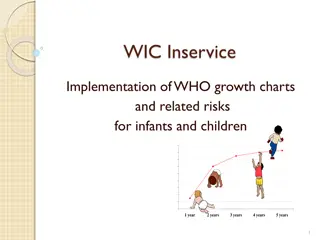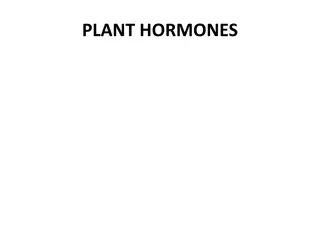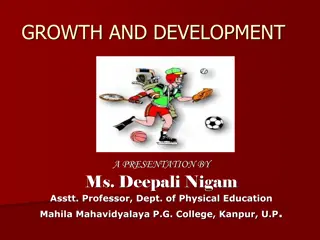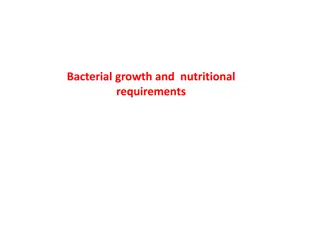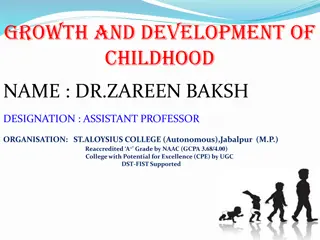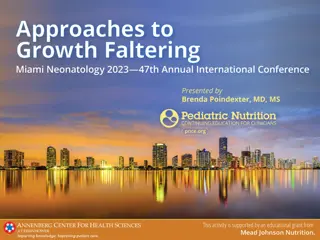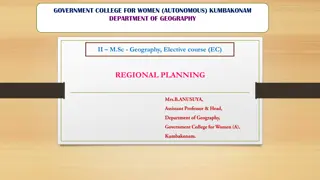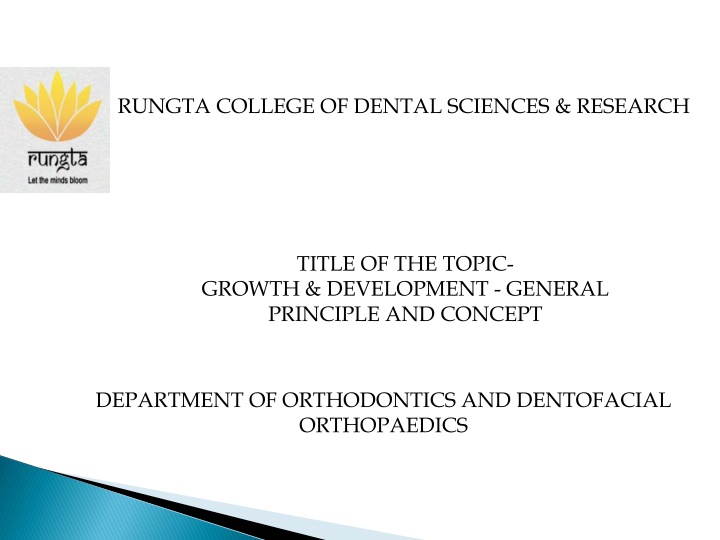
Growth and Development in Orthodontics: General Principles and Concepts
Explore the core areas of growth and development in orthodontics, covering definitions, Scammon's growth curve, bone formation methods, and more. Understand the importance of growth spurt stages and how they affect dental development.
Download Presentation

Please find below an Image/Link to download the presentation.
The content on the website is provided AS IS for your information and personal use only. It may not be sold, licensed, or shared on other websites without obtaining consent from the author. If you encounter any issues during the download, it is possible that the publisher has removed the file from their server.
You are allowed to download the files provided on this website for personal or commercial use, subject to the condition that they are used lawfully. All files are the property of their respective owners.
The content on the website is provided AS IS for your information and personal use only. It may not be sold, licensed, or shared on other websites without obtaining consent from the author.
E N D
Presentation Transcript
RUNGTA COLLEGE OF DENTAL SCIENCES & RESEARCH TITLE OF THE TOPIC- GROWTH & DEVELOPMENT - GENERAL PRINCIPLE AND CONCEPT DEPARTMENT OF ORTHODONTICS AND DENTOFACIAL ORTHOPAEDICS
CORE AREAS GROWTH & DEVELOPMENT DEFINITIONS SCAMMON S GROWTH CURVE CEPHALO-CAUDAL GROWTH GRADIENT METHODS OF STUDYING GROWTH BONE DEPOSITION & RESORPTION ENDOCHONDRAL BONE FORMATION INTRAMEBRANOUS BONE FORMATION FUNCTIONAL MATRIX ENLOWS EXPANDING V PRINCIPLE CORE AREAS DOMAIN DOMAIN CATEGORY DESIRE TO KNOW CATEGORY AFFECTIVE COGNITIVE MUST KNOW COGNITIVE MUST KNOW PSYCHOMOTOR MUST KNOW COGNITIVE NICE TO KNOW COGNITIVE NICE TO KNOW AFFECTIVE NICE TO KNOW COGNITIVE COGNITIVE MUST KNOW MUST KNOW
PART I GROWTH & DEVELOPMENT DEFINITIONS SCAMMON S GROWTH CURVE CEPHALO-CAUDAL GROWTH GRADIENT METHODS OF STUDYING GROWTH BONE DEPOSITION & RESORPTION ENDOCHONDRAL BONE FORMATION INTRAMEBRANOUS BONE FORMATION PART I
DEFINITION - The self multiplication of living substance (J.S. Huxley) - Increase in size , change in proportion and progressive complexity (Krogman) - An increase in size (Todd)
DEFINITION- - Progress towards maturity - TODD - Development refers to all the naturally occurring unidirectional changes in the life of an individual from its existence as a single cell to its elaboration as a multifunctional unit terminating in death - Moyers
- Growth doesnt takes place uniform at all times. - There seems to be some stage when sudden acceleration in growth takes place. - This sudden increase in growth is termed as growthspurt .
- Just before birth - One year after birth - Mixed dentition growth spurt Boys: 8-11 years Girls: 7-9 years - Pre-pubertal growth spurt Boys: 14-16 years Girls: 11-13 years
- Different organs grow at different rates and at different times. This is termed as differential growth. - The rate of growth can be best described by: -SCAMMON S CURVE OF GROWTH -CEPHALO-CAUDAL GRADIENT OF GROWTH
Body tissues are broadly classified into 4 types: - Lymphoid Tissues - Neural Tissues - General Tissues - Genital tissues
- Lymphoid tissues proliferate rapidly in late childhood and reaches almost 200% of adult size. - This is an adaptation to protect children from infection, as they are more prone to it. - By about 18 years of age lymphoid tissues undergo involution to reach adult size.
- Grows very rapidly and almost reaches adult size by 6-7 years of age. - Very little growth is seen after 6-7 years
General or visceral tissues consist of muscles, bones and other organs. S shaped curve with rapid growth up to 2-3 years of age followed by a slow phase of growth between 3-10 years. After the 10th year rapid phase of growth occurs terminating by 18-20th year.
Consist of reproductive organs. Shows negligible growth until puberty. They grow rapidly at puberty reaching adult size after which growth ceases.
Head takes upto 50% of total body length around 3rd month of intrauterine life. At the time of birth head size reduces to 30% of body length. As age increases there is a progressive reduction to the relative size of head to about 12% in the adult Lower limbs are rudimentary around 2nd month of IU life. They later grow and represent almost 50% of body length at adulthood. Post-natally the face grows more than cranium.
Measurement approaches 1) Experimental approaches 2) Bimetric Test- Weight, height, skeletal maturation and ossification 3) are measured according to standard basis. Vital Staining- Site of growth, direction, duration, amount of 4) growth at different sites are measured. Radioisotopes- Incorporated in bone works as in vivo markers. 5)
Cephalometry- Helps to take serial radiographs of patients skull to measure the growth changes taking place. Hand-wrist X-rays- Hand wrist radiographs help to study the biological or skeletal age of a person. The carpels have specific age of ossification.
Bony changes takes place by bone deposition and resorption known as bone remodelling. Changes that are produced are: Change in size 1) Chang in shape 2) Change in proportion 3) Change in relationship of the bone with adjacent structures. 4)
Combination of bone deposition and resorption resulting in a growth movement towards the depositing surface is called cortical drift. If deposition and resorption on either side is same then the bone remains constant. If less bone is resorbed and more bone is deposited then thickness of the bone increases.
Primary Displacement- If a bone is displaced as a result of its own growth, it is called primary displacement. For example- Growth of maxilla at the tuberosity region results in pushing the maxilla to the cranial base.
Secondary Displacement- If a bone is displaced due to growth and enlargement of adjacent bone, it is called secondary displacement. For example- The growth of cranial base causes the forward and downward displacement of maxilla.
Process of bone formation is called osteogenensis. 2 ways of bone formation takes place:- Endochondral bone formation 1) Intra membranous bone formation. 2)
Mesenchymal cells become condensed at the site of bone formation. These cells differentiate into chondroblasts and lay down hyaline cartilage. Cartilage is surrounded by perichondrium that is highly vascular. The intercellular substance becomes calcified due to influence of alkaline phosphatase.
Thus the cartilage nutrition is cut off leading to their death and space is created called as primary areolae. Blood vessels and osteogenic cells invade the calcified cartilagineous matrix. This forms secondary areolae. Osteogenic cells from perichondrium becomes osteoblast. The osteoblast lay down layers of osteoid and helps in bone formation.
At the site of bone formation mesenchymal cells become aggregated. Some mesenchymal cells lay down bundle of collagen fibres. Some mesenchymal cells enlarge and form osteoblasts. These osteoblasts secrete a gelatinous matrix called osteoid and calcium salt is deposited converting osteoid into bony lamellae. Osteoblasts move away from lamellae and new layer of osteoid is secreted. The trapped osteoblasts form osteocytes.
1) All skeletal tissues associated with single function are called skeletal unit. 2) Discrete skeletal units are termed as Micro-skeletal unit . 3) The maxilla( orbit, pneumatic, palatal and basal micro- skeletal units) and mandible( alveolar, angular, condylar, gonial, mental, coronoid and basal micro-skeletal units) are comprised of such micro skeletal units comprising together as Macro-skeletal unit .
Growth is quantitative Growth might cause change in form or proportion, increase or decrease in size, and change in texture and complexity. In simple words, growth is change or difference in quantity Characteristically, growth is equated with enlargement. But sometimes there are instances in which there is a decrease in size during growth, e.g. thymus gland after puberty. Development includes all the changes in the life of a subject from his or her origin as a single cell till death. It comprises sequential events from fertilization till death. Development: growth + differentiation + translocation where differentiation means change in quality and translocation means change in position
Textbook of Orthodontics Gurkeerat Singh, Jaypee Brothers; 2nd Edition Orthodontics The Art and Science, S.I Bhalajhi, AryaMedi Publishing; 7th Edition Textbook of Orthodontics Sridhar Premkumar, Elsevier; 1st Edition Orthodontics: Diagnosis and Management of Malocclusion and Dentofacial Deformities O.P Kharbanda, Elsevier; 1st Edition


